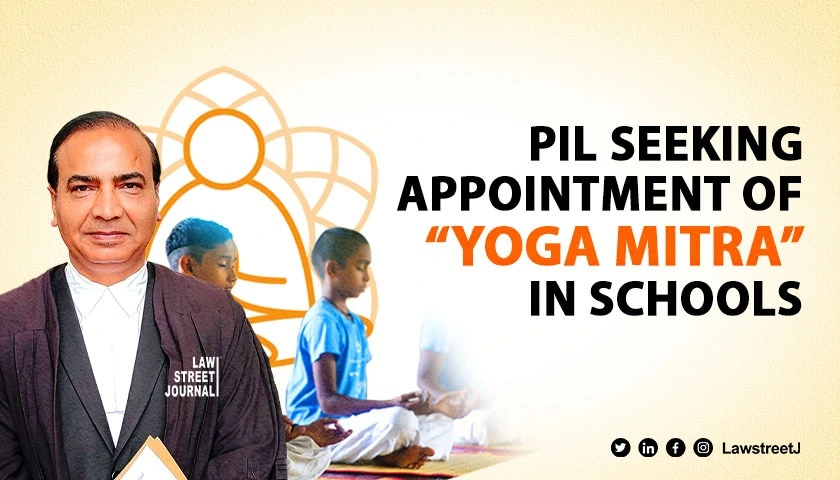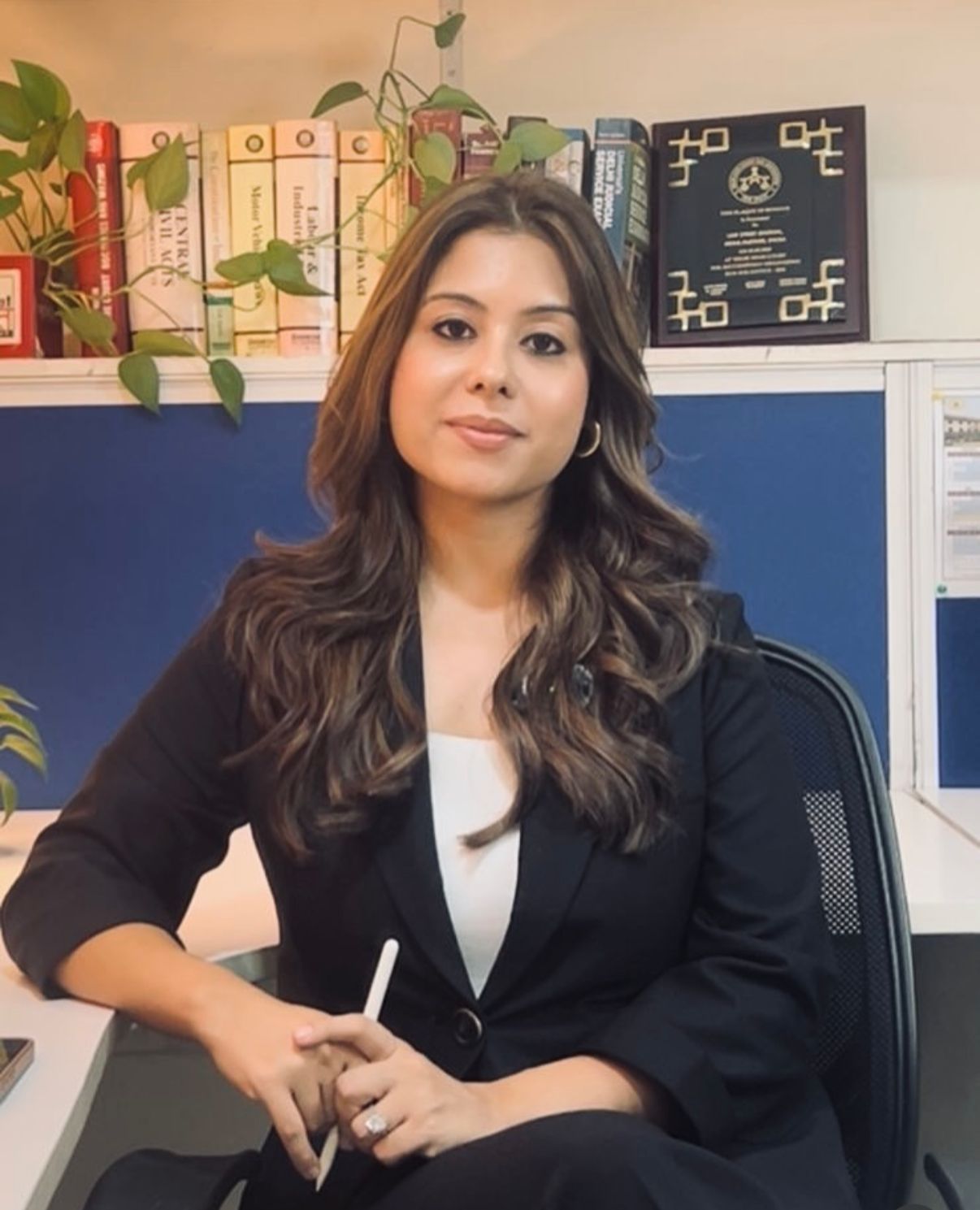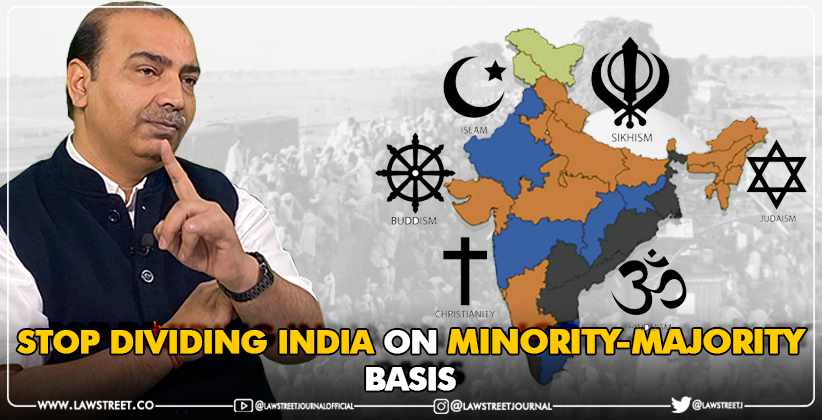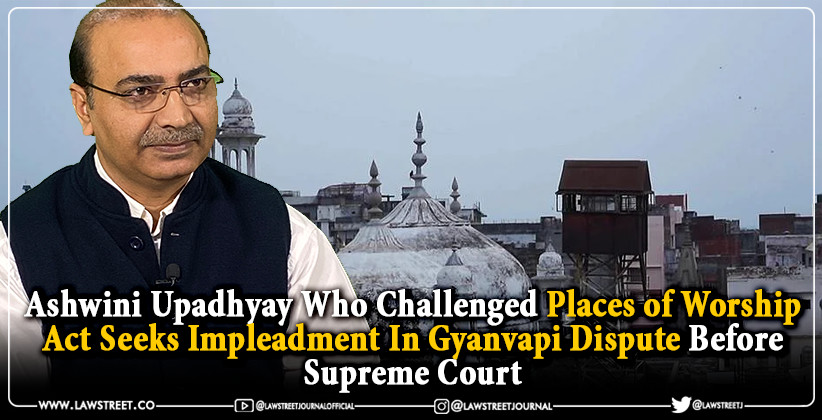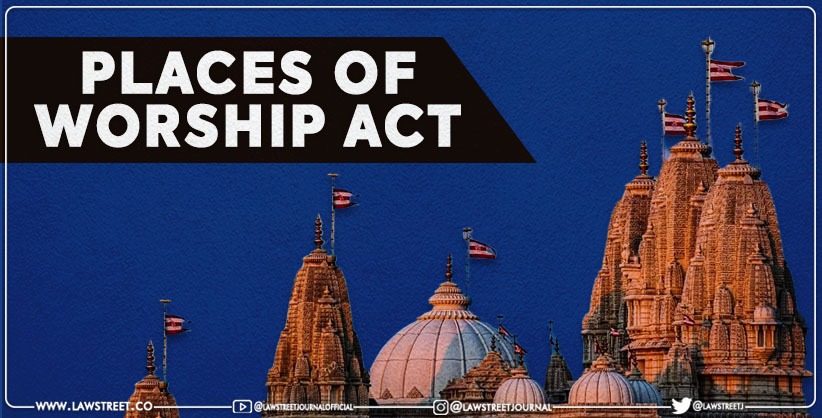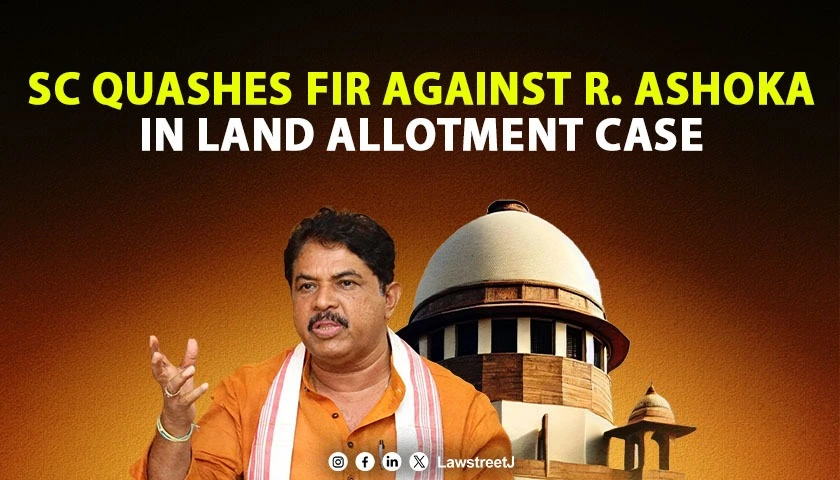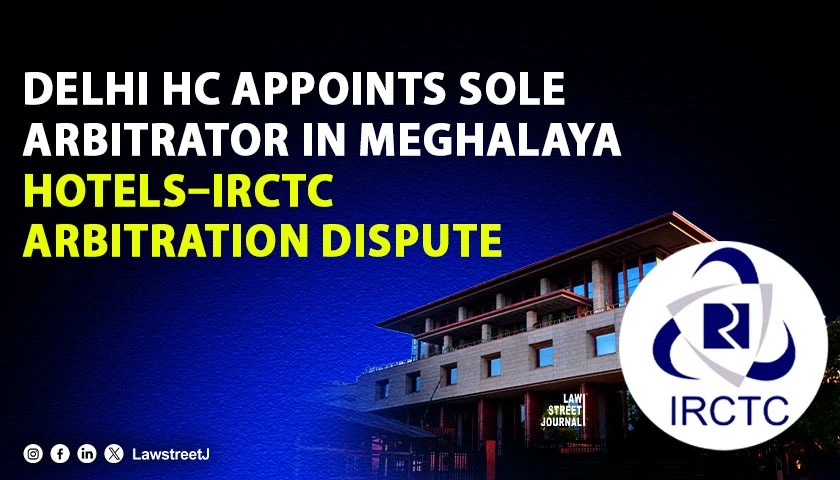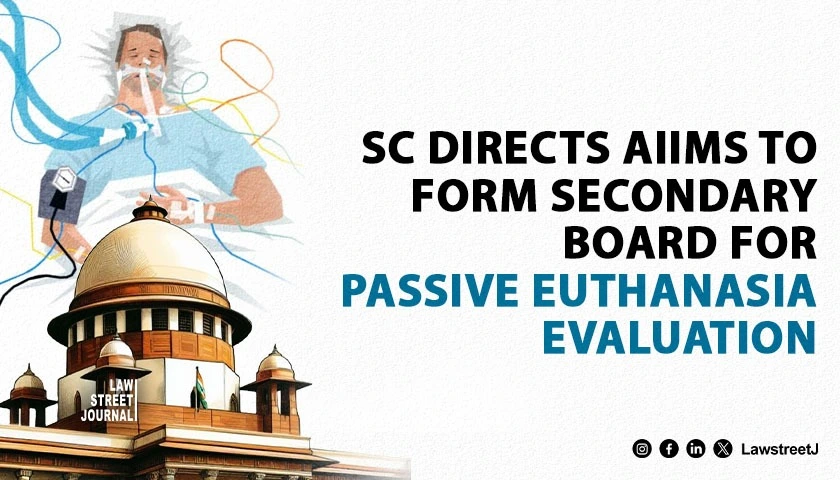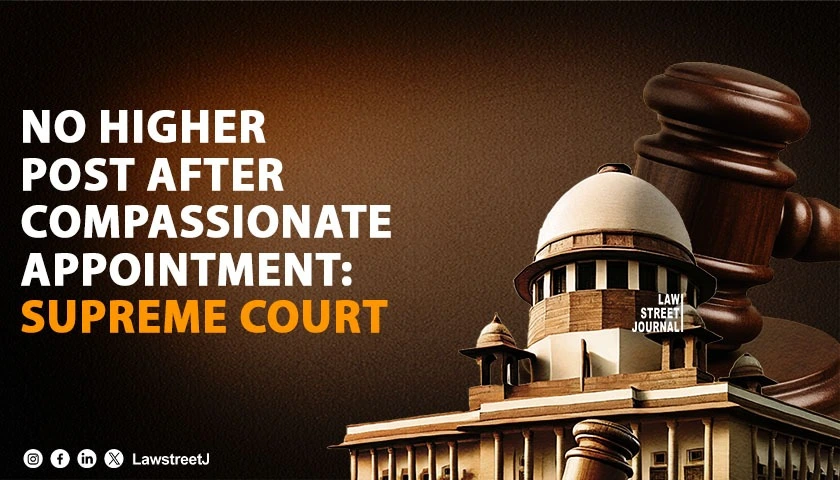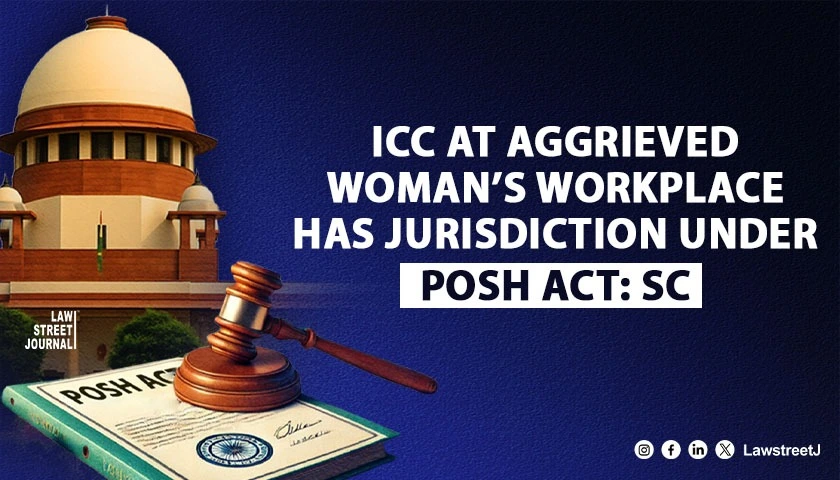New Delhi: In a significant move towards promoting the holistic development of children in schools, Advocate Ashwini Kumar Upadhyay has filed a Public Interest Litigation (PIL) in the Supreme Court of India, seeking the appointment of ‘Yoga Mitra’ in all schools across the country. The petition, filed under Article 32 of the Constitution, requests the court to direct the state governments to implement this initiative, ensuring that children receive the benefits of yoga and health education as part of their regular curriculum.
The petition emphasizes that integrating yoga into school education would foster the overall mental and physical development of children up to the age of 14. It stresses that yoga, as a life science and a method of self-discipline, would not only enhance students’ knowledge and potential but also contribute significantly to their emotional and mental well-being.
Constitutional Obligations: Right to Health and Right to Education
The petitioner, Adv. Upadhyay, has highlighted the close interrelationship between the Right to Health guaranteed under Article 21 and the Right to Education under Article 21A. The petition contends that these fundamental rights are complementary and indispensable for the full development of a child’s personality. The absence of health education in schools, particularly the lack of trained yoga teachers, undermines these rights, the petition argues.
The PIL underscores that the state has a constitutional obligation to ensure the health and well-being of its citizens, particularly children, by creating conditions conducive to good health. The petitioner refers to Articles 39 and 47, which impose a duty on the state to improve public health, especially in relation to children, and to provide necessary education, training, and supervision.
Section 29 of the RTE Act and the Role of Yoga in Schools
The petition draws attention to Section 29 of the Right to Education (RTE) Act, 2009, which mandates that schools must aim for the full development of children’s mental and physical abilities. This includes providing education that enhances a child’s potential and talents to the fullest extent. Yoga, according to the petition, is integral to achieving these goals, making it necessary for schools to include it as a core subject.
Furthermore, the National Curriculum Framework (NCF) 2005, notified by the central government under the RTE Act, specifically lists ‘Health & Yoga’ as a compulsory subject in elementary education. Despite this mandate, the petition argues that there has been a failure to implement the NCF guidelines effectively, as there is currently no standardized curriculum, textbooks, or trained teachers for yoga education in schools.
International and Judicial Recognition of Yoga’s Secular Nature
The petitioner has also addressed concerns regarding yoga’s potential conflict with India’s secular ethos. Citing a 3-judge bench decision of the Appellate Court of California (USA), which ruled that yoga is a secular activity, and similar observations made by the Supreme Court of India in previous cases, the petition clarifies that yoga is not a religious practice. Instead, it is a scientific method for promoting physical and mental well-being, which makes it suitable for inclusion in the school curriculum.
Yoga: A Holistic Tool for Child Development
Adv. Upadhyay’s petition argues that yoga is a comprehensive system of self-development, which is essential for children’s mental, emotional, and physical growth. The petitioner asserts that yoga helps children develop positive thinking, self-discipline, and emotional control, while also enhancing their creativity, cognitive abilities, and self-awareness.
The petition describes yoga as a “scientific universal method” that nurtures the creative faculties of individuals and helps divert their thoughts toward positive directions. This, in turn, fosters self-confidence, self-discipline, and emotional stability in children. By introducing yoga into schools through the appointment of ‘Yoga Mitra,’ the state can equip students with crucial life skills that will serve them well in adulthood.
A Call for Action: Implementation of National Curriculum Framework
The PIL highlights the failure of the central government and NCERT to provide a standardized syllabus and textbooks for ‘Health & Yoga Science’ for students from Class I to VIII. The petitioner claims that this lack of implementation has resulted in yoga education being neglected, despite it being a compulsory subject under the NCF 2005.
Adv. Upadhyay calls for the immediate appointment of trained yoga teachers, referred to as ‘Yoga Mitra,’ to ensure that yoga education is imparted effectively to students in schools. The petition also requests the court to direct the state and central governments to ensure that adequate resources, technical support, and training are provided to promote health and yoga education in schools.
Prime Minister’s Vision for Yoga and Its Global Significance
The petition references Prime Minister Narendra Modi’s speech at the United Nations General Assembly in 2014, where he emphasized the global importance of yoga. The Prime Minister described yoga as an “invaluable gift of India’s ancient tradition” that promotes the unity of mind and body, as well as harmony between humans and nature. He also advocated for the adoption of International Yoga Day, highlighting yoga’s potential to promote well-being and help individuals achieve a sense of oneness with the world.
Despite the Prime Minister’s recognition of yoga’s global significance, the petition argues that the actual practice of yoga education in Indian schools remains deficient. The petitioner stresses that without standardized textbooks, trained yoga teachers, and a proper evaluation system, yoga education in schools is “merely namesake” and has not been effectively integrated into the curriculum.
The Need for Trained ‘Yoga Mitra’ in Schools
One of the key demands of the petition is the appointment of trained ‘Yoga Mitra’ in schools. The petitioner argues that yoga teachers must be adequately trained not only in the practice of yoga but also in pedagogy, so they can teach children in a way that aligns with the educational goals outlined in the RTE Act and NCF 2005.
By appointing trained ‘Yoga Mitra,’ the petitioner believes that the state can bridge the gap between the constitutional mandate for holistic education and the actual practices in schools. This will ensure that students receive a well-rounded education that includes both physical and mental well-being, thereby preparing them to lead healthy and productive lives.
Conclusion
The PIL filed by Advocate Ashwini Kumar Upadhyay seeks to address a critical gap in India’s education system by calling for the appointment of ‘Yoga Mitra’ in schools. By integrating yoga into the school curriculum, the petition argues, the state can fulfill its constitutional obligation to provide a holistic education that promotes the overall development of children.
As the Supreme Court considers this petition, the outcome could have far-reaching implications for the future of education in India. If successful, the appointment of ‘Yoga Mitra’ in schools could mark a significant step toward creating a more balanced and integrated education system that nurtures the physical, mental, and emotional well-being of every child.
The PIL has been filed through Adv. Ashwani Dubey, AOR, Supreme Court.

